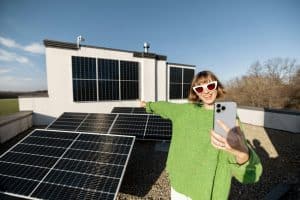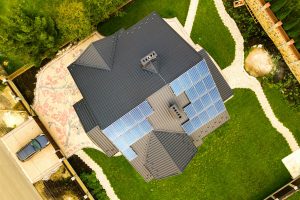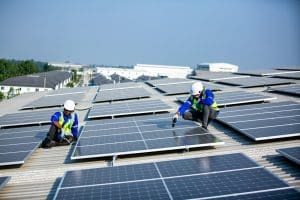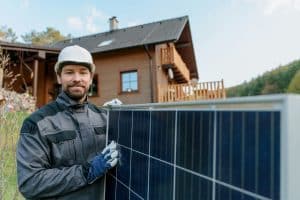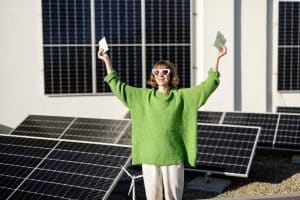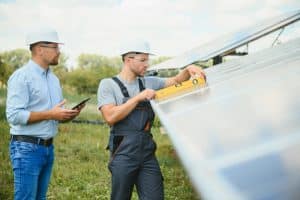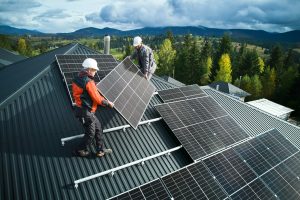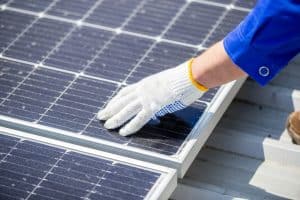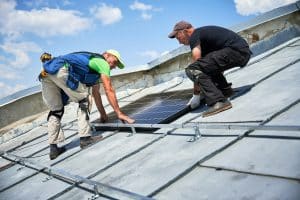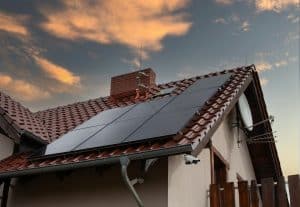As energy costs rise and sustainability becomes a priority, many UK homeowners are exploring solar energy solutions. Understanding the differences between off-grid and on-grid solar systems is crucial for making an informed decision.
What Is an Off-Grid Solar System?
An off-grid solar power system operates independently of the national electricity grid. It typically includes solar panels, a battery bank for energy storage, and an inverter to convert the stored energy into usable electricity. This setup is ideal for remote locations or homeowners seeking complete energy autonomy.
Key Components:
- Solar Panels: Capture sunlight and convert it into electricity.
- Battery Bank: Stores excess energy for use during nighttime or cloudy days.
- Inverter: Converts stored DC energy into AC power for household use.
Advantages:
- Complete independence from the national grid.
- Protection against power outages.
- Ideal for remote or rural properties.
Considerations:
- Higher initial setup costs due to battery storage.
- Requires careful energy management to prevent shortages.
What Is an On-Grid Solar System?
An on-grid solar system, also known as a grid-tied system, is connected to the national electricity grid. It allows homeowners to draw power from the grid when solar production is low and to feed excess energy back into the grid, often receiving credits or payments in return.
Key Components:
- Solar Panels: Generate electricity from sunlight.
- Inverter: Converts solar energy into usable AC power.
- Grid Connection: Facilitates the exchange of electricity with the national grid.
Advantages:
- Lower initial costs compared to off-grid systems.
- Potential to earn from surplus energy via feed-in tariffs.
- No need for battery storage.
Considerations:
- Dependence on the grid means vulnerability to outages.
- Less autonomy compared to off-grid setups.
Off-Grid Solar Systems in the UK
In the UK, off-grid solar systems are gaining popularity, especially in rural areas. Homeowners are turning to these systems to combat rising energy prices and to achieve greater energy independence. For instance, a retired couple in Ayr reduced their monthly energy bills by over £200 by switching to a combination of solar power, battery storage, and a heat pump.The Scottish Sun
Available Off-Grid Kits:
- 1.4kW 24V Complete Off-Grid System: Includes 4 x 360W solar panels, a 3kW hybrid inverter, and a 7.2kWh battery bank .Solarika.co.uk+3Off Grid Renewables+3Off Grid Renewables+3
- 2.4kW 24V Complete Off-Grid System: Features 8 x 300W solar panels, a 3kW hybrid inverter, and a 12kWh battery bank .Off Grid Renewables
- EcoFlow DELTA Pro Portable Power Station: Offers a 3600Wh battery capacity with various solar panel configurations .Off Grid Renewables+2Leisure Power+2Battery Group+2
Cost Considerations
While the initial investment for off-grid systems can be substantial, the long-term savings and energy independence often justify the cost. In the UK, solar panels can save an average household £600–£690 annually on energy bills and may increase property value by over 6% .Latest news & breaking headlines
Making the Right Choice
Choosing between off-grid and on-grid solar systems depends on your specific needs, location, and budget. If you seek complete energy independence and live in a remote area, an off-grid system may be ideal. Conversely, if you prefer a lower upfront cost and the ability to earn from surplus energy, an on-grid system might be more suitable.
For UK homeowners, numerous suppliers offer a range of solar kits to meet diverse requirements. It’s advisable to consult with a professional installer to assess your energy needs and to explore available government incentives or grants.Battery Group+1 Off Grid Renewables
If you are still confuse,d then contact us now for the best solar installer options for you


